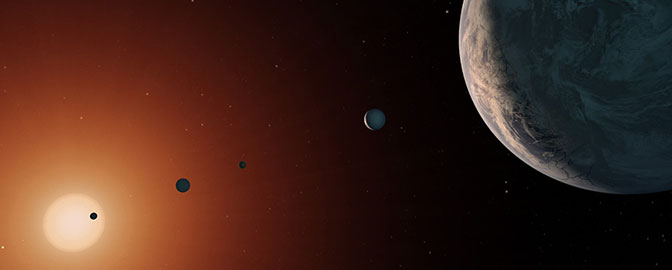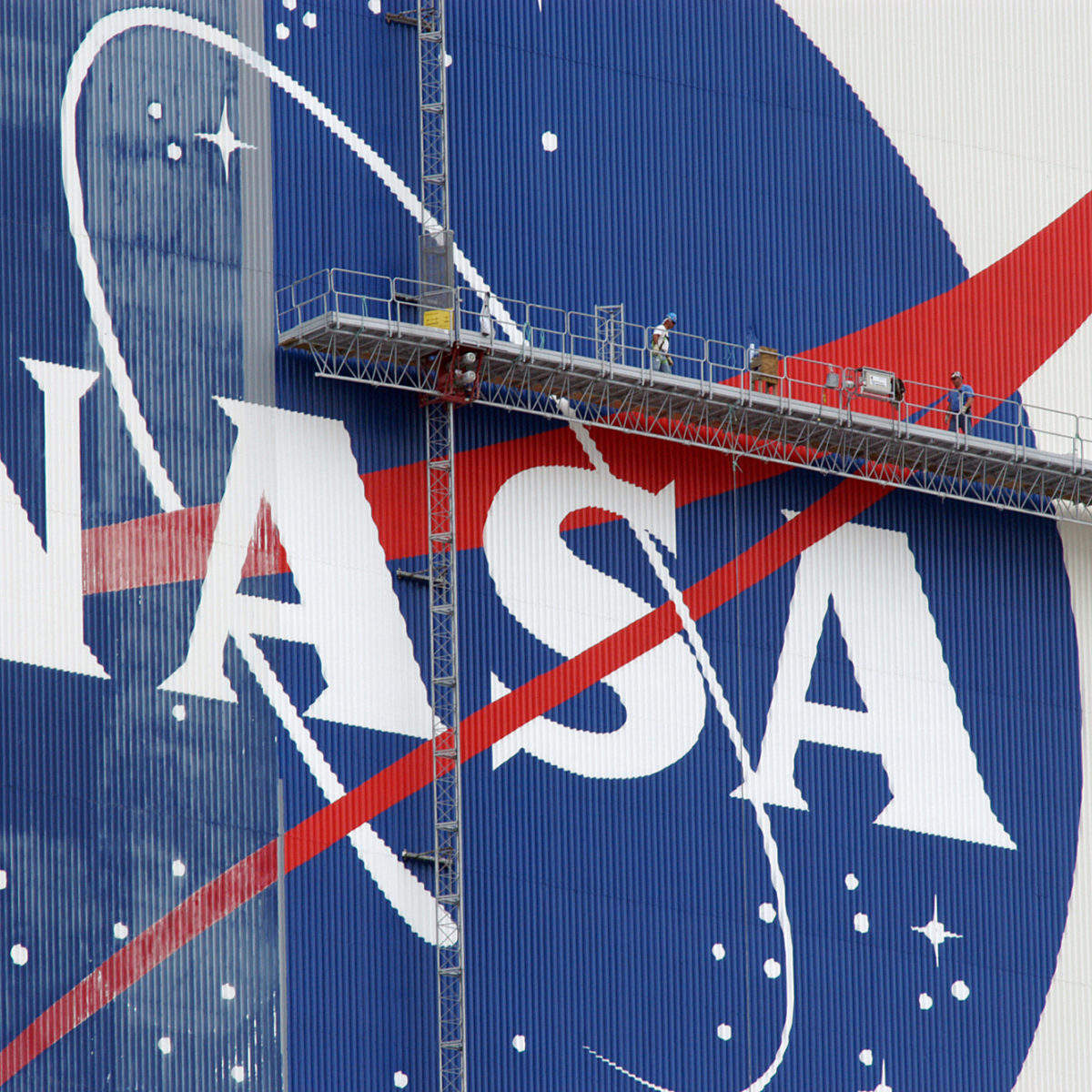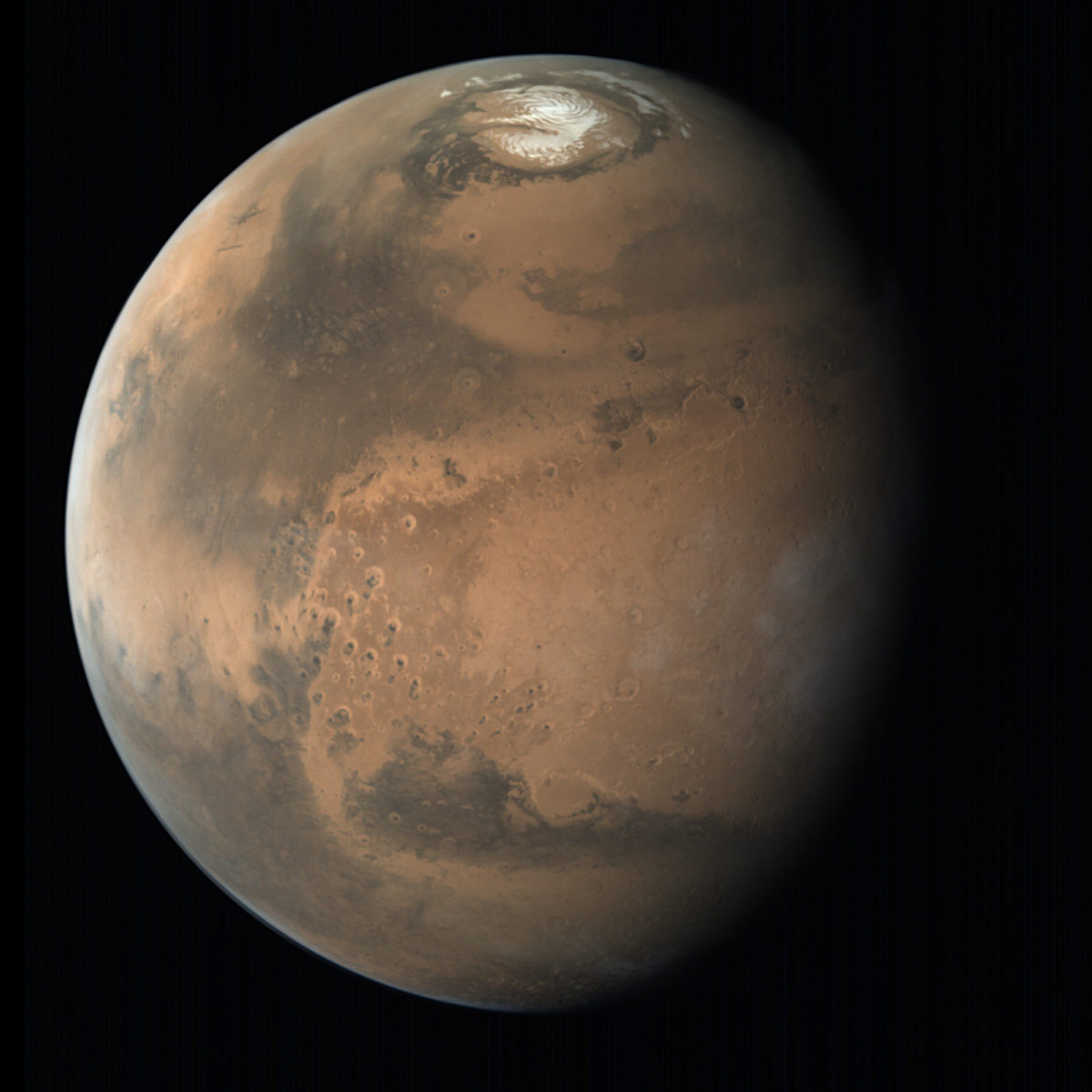NASA's budget in fiscal year (FY) 2020 is $22.629 billion which represents 0.48% of all U.S. government spending. This is a 5.3% increase from the previous fiscal year.
The White House released its Presidential Budget Request (PBR) for NASA's fiscal year 2020 on 11 March 2019, followed by a supplemental budget request on 13 May. Together they proposed a top-line NASA budget of $22.6 billion—a 5% increase compared to the previous year. The supplemental request was released in response to a Presidential directive to land astronauts on the Moon by 2024.
Congress passed a compromise budget in late December that allocated the $22.6 billion requested, but distributed the funding differently throughout the space program. The final FY 2020 NASA budget provided less funding than requested for the lunar landing effort while restoring all major programs slated for cuts under the presidential budget request. President Trump signed this budget into law on 20 December 2019.
To learn more about NASA's budget, visit our "What is NASA's Budget?" page.
| 2019 Enacted | 2020 Proposed* | Final | |
|---|---|---|---|
| NASA | $21,500 | $22,619 | $22,629 |
| Science | $6,906 | $6,393 | $7,139 |
| Planetary Science | $2,758 | $2,712 | $2,713 |
| Earth Science | $1,931 | $1,780 | $1,972 |
| Astrophysics | $1,192 | $845 | $1,306 |
| WFIRST | $312 | $0 | $511 |
| JWST | $306 | $352.6 | $423 |
| Heliophysics | $720 | $704 | $725 |
| Exploration | $5,050 | $6,396 | $6,018 |
| Orion Crew Vehicle | $1,350 | $1,407 | $1,407 |
| SLS | $2,150 | $2,286 | $2,586 |
| Lunar Gateway | $450 | $490 | $450 |
| Lunar Lander | - | $1,000 | $600 |
| Space Technology | $927 | $1,146 | $1,100 |
| Space Operations | $4,639 | $4,285 | $4,140 |
| Aeronautics | $725 | $666 | $784 |
| STEM Engagement | $110 | $0 | $120 |
| Safety, Security, & Mission Services | $2,755 | $3,084 | $2,913 |
| Construction and Environmental Compliance | $348 | $600 | $373 |
All values are in millions of dollars. Directorate/top-level line-items are in boldface, divisions and major projects are in standard formatting; sub-programs are in italics. All major directorates are listed but not all sub-divisions or projects are included here. Due to rounding, entries may not add up to the total budget amounts. *Includes the supplemental FY 2020 budget request released in May 2019.
NASA's budget during the Trump Administration. The vertical axis displays both NASA's total congressional appropriation in billions of dollars and the amount requested by the President. The horizontal axis is fiscal years. NASA's full budget history dataset is available to view or to download as an Excel spreadsheet.
The FY 2020 Presidential Budget Request
The President's Budget Request (PBR) for NASA was released on 11 March 2019, and originally proposed $21.019 billion for fiscal year 2020. A supplemental request was released in May 2019 that proposed an additional $1.6 billion to support an acceleration of the lunar landing goal to 2024. All numbers for the PBR listed on this page include the supplemental request.
| 2019 Enacted | 2020 PBR* | % Change | |
|---|---|---|---|
| NASA | $21,500 | $22,619 | +5% |
| Science | $6,906 | $6,393 | -8.7% |
| Planetary Science | $2,758 | $2,712 | -1.7% |
| Earth Science | $1,931 | $1,780 | -7.8% |
| Astrophysics | $1,496 | $1,197 | -20% |
| WFIRST | $312 | $0 | -100% |
| JWST | $306 | $352.6 | +15% |
| Heliophysics | $720 | $704 | -2.2% |
| Exploration | $5,050 | $6,396 | +27% |
| Orion Crew Vehicle | $1,350 | - | - |
| SLS | $2,150 | - | - |
| Lunar Gateway | $450M | $490 | +9% |
| Space Technology | $927 | $1,146 | +24% |
| Space Operations | $4,639 | $4,285 | -7.6% |
| Aeronautics | $725 | $666 | -8.1% |
| STEM Engagement | $110 | $0 | -100% |
| Safety, Security, & Mission Services | $2,755 | $3,084 | +12% |
| Construction and Environmental Compliance | $348 | $600 | +72% |
All values are in millions of dollars. *Includes the supplemental FY 2020 budget request released in May 2019.
Note: all quotes are from NASA's FY 2020 request and the supplemental request.
- $546.5 million for the Mars Exploration Program, of which $278 million is for the Mars 2020 rover and $109 million is to begin formulation of the next mission in a Mars Sample Return campaign.
- Moves the launch date of the Europa Clipper mission from the late-2020s to 2023, and proposes using a commercial rocket instead of an SLS for launch.
- Walks back the proposal to transition the ISS to commercial operations by 2025: "By 2025, the Budget envisions commercial capabilities on the International Space Station as well as new commercial facilities and platforms to continue the American presence in Earth orbit."
- Increases funding for technology development through the Lunar Surface Innovation Initiative, "which aims to spur the creation of novel technologies needed for lunar surface exploration and accelerate the technology readiness of key systems and components."
- NASA is proposing "increasing facility maintenance activities at all Centers to reduce risk to missions. Increased funding will help reduce the significant backlog of facility maintenance projects and requirements."
- Proposes $1 billion for a Human Lunar Landing System "to enable NASA to begin supporting the development of commercial human lunar landing systems. This acquisition strategy will allow NASA to purchase an integrated commercial lunar lander that will transport astronauts from lunar orbit to the lunar surface and back."
Proposed Cuts in FY 2020
- The Wide-Field Infrared Survey Telescope (WFIRST) in Astrophysics: "given delays and cost growth with the James Webb Space Telescope, the Administration is not ready to proceed with another multi-billion-dollar space telescope."
- PACE and CLARREO Pathfinder missions in Earth Science: "they are lower priorities within the current fiscal environment."
- The office of STEM Engagement (previously the Education Division)
President's Budget Request Source Documents
- FY 2020 NASA Budget Amendment Summary
- FY 2020 Budget Amendment language
- NASA FY 2020 President's Budget Request
- FY 2020 NASA Budget Summary Briefing (2 MB PDF)
- FY 2020 NASA Budget Agency Fact Sheet (300 KB PDF)
- FY 2020 NASA Budget Mission Fact Sheet (510 KB PDF)
Congressional Action
On 22 May 2019 the House Appropriations Committee approved its Commerce, Justice, and Science (CJS) appropriations legislation for FY 2020, which includes NASA. The bill ignored the White House supplemental budget request and instead increased funding for Earth Science, Astrophysics, and STEM Outreach/Education programs. It also provided funding to continue the WFIRST space telescope and all Earth Science missions proposed for cancellation.
On 26 September 2019, the Senate Commerce Appropriations Committee approved its legislation for NASA's FY 2020 appropriation. The proposed bill provides partial funding human lunar landing systems, augments the SLS budget to support development of the Exploration Upper Stage, and rejects all proposed program cancellations, same as the House bill. The Senate voted 84 - 9 in on a "minibus" (combined appropriations package) which included the CJS bill on 31 October 2019.
Congress released the final compromise legislation to fund the U.S. government on 16 December 2019 in two "mini-bus" packages, one combining Defense, CJS, Financial Services and General Government, and Homeland Security (H.R. 1158) and the other containing the remaining areas of the federal government. NASA received $22.6 billion in this compromise. The final legislation rejected every White House proposal to cancel major programs and provided some—but not all—of the funding requested for human-qualified lunar landing systems to achieve the 2024 lunar landing goal. The Senate passed this bill 81 - 11 on 19 Dec 2019.
President Trump signed H.R. 1158 into law on 20 Dec 2019, averting another government shutdown and closing the book on NASA's FY 2020 budget.
| 2019 Enacted | 2020 PBR* | House CJS | Senate CJS | Final | |
|---|---|---|---|---|---|
| NASA | $21,500 | $22,619 | $22,315 | $22,750 | $22,629 |
| Science | $6,906 | $6,393 | $7,161 | $6,906 | $7,139 |
| Planetary Science | $2,758 | $2,712 | $2,713 | $2,631 | $2,713 |
| Earth Science | $1,931 | $1,780 | $2,023 | $1,945 | $1,972 |
| Astrophysics | $1,192 | $845 | $1,368 | $1,172 | $1,306 |
| WFIRST | $312 | $0 | $511 | $445.7 | $511 |
| JWST | $306 | $352.6 | $352.6 | $423 | $423 |
| Heliophysics | $720 | $704 | $704 | $735 | $725 |
| Exploration | $5,050 | $6,396 | $5,130 | $6,223 | $6,018 |
| Orion Crew Vehicle | $1,350 | $1,407 | $1,425 | $1,407 | $1,407 |
| SLS | $2,150 | $2,286 | $2,150 | $2,586 | $2,586 |
| Lunar Gateway | $450 | $490 | - | $500 | $450 |
| Lunar Lander | - | $1,000 | - | $744 | $600 |
| Space Technology | $927 | $1,146 | $1,292 | $1,076 | $1,100 |
| Space Operations | $4,639 | $4,285 | $4,286 | $4,150 | $4,140 |
| Aeronautics | $725 | $666 | $700 | $784 | $784 |
| STEM Engagement | $110 | $0 | $123 | $112 | $120 |
| Safety, Security, & Mission Services | $2,755 | $3,084 | $3,085 | $2,935 | $2,913 |
| Construction and Environmental Compliance | $348 | $600 | $497 | $524 | $373 |
All values are in millions of dollars. Directorate/top-level line-items are in boldface. Smaller projects are in italics. Not all sub-divisions or projects are included here. Due to rounding, entries may not add up to the total budget amounts. *Includes the supplemental FY 2020 budget request released in May 2019. For consistency, JWST is considered as a line-item separate from Astrophysics.
House Appropriations Committee FY 2020 Documents
- Summary of the House CJS appropriations legislation
- FY 2020 House CJS Appropriations Legislation (H.R. 3055)
- FY 2020 House CJS Committee Report
Senate Appropriations Committee FY 2020 Documents
- Summary of the Senate CJS appropriations legislation
- FY 2020 Senate CJS Appropriations Legislation (S. 2584)
- FY 2020 Senate CJS Committee Report - NASA Section
Final Congressional FY 2020 NASA Appropriations Documents
Related Articles
NASA Rings in the New Year with $22.6 billion
NASA's final 2020 budget rejected every major cut proposed by the Trump Administration, increased funding for popular congressional projects such as the Space Launch System, and underfunded several key administration proposals, including a human-qualified lunar lander and low-Earth orbit commercialization projects.
What the recent budget deal means for NASA
A bigger budgetary pie allows the space agency's budget to grow—for one year at least.
A Crash Program or Modest Proposal?
The White House released a long-awaited supplemental budget request for NASA today. It proposes an additional $1.6 billion for an accelerated human spaceflight effort to land on the Moon in 2024. This boosts the President's budget request for NASA to $22.6 billion in fiscal year 2020, which is approximately $1.1 billion or 5% more than the amount provided by Congress last year.
Hearing Recap: Keeping Our Sights on Mars
Highlights from the hearing, 'Keeping our Sights on Mars: A Review of NASA's Deep Space Plans' held on May 8th in the House of Representatives.
Hearing Recap: NASA’s FY 2020 Budget Request
On March 27, 2019, the House Appropriations Subcommittee on Commerce, Justice, Science and Related Agencies held a hearing titled, “NASA’s FY 2020 Budget Request.”
Amidst Cuts to NASA, Mars Sample Return May Finally Happen
The President's Budget Request for NASA in 2020 would start a Mars Sample Return mission and ramp up efforts to send humans to the Moon. But it would still kick off the first year of a new decade with a half-billion dollar cut to the space agency.
Related Podcasts
Can NASA return astronauts to the Moon by 2024? Vice President Mike Pence shocked the space community by announcing this ambitious new goal just weeks after the Trump Administration proposed a half-billion dollar cut to the space agency.


 Explore Worlds
Explore Worlds Find Life
Find Life Defend Earth
Defend Earth







